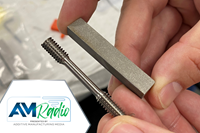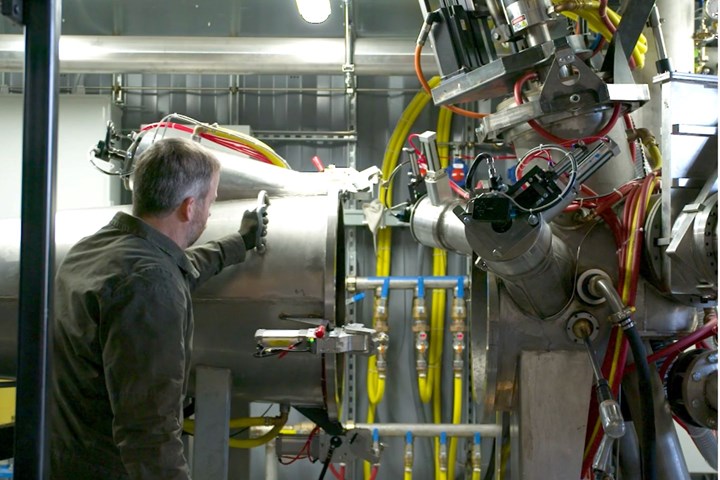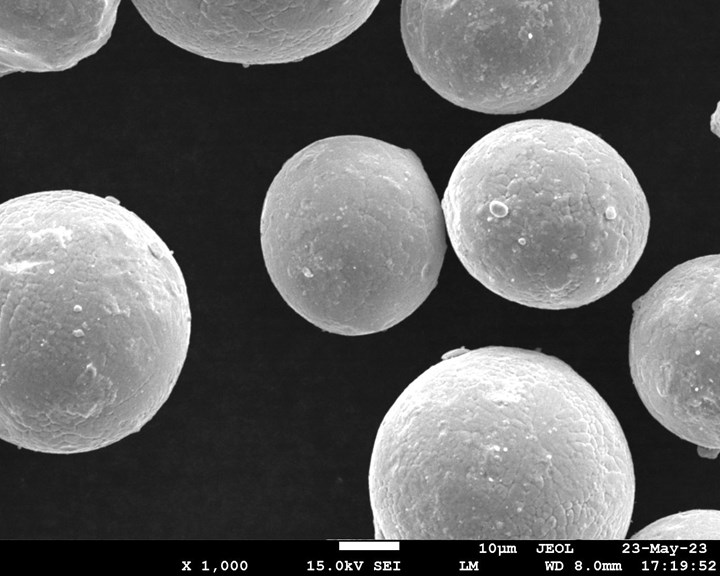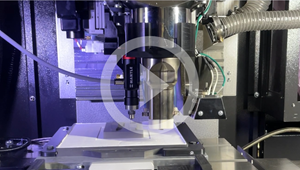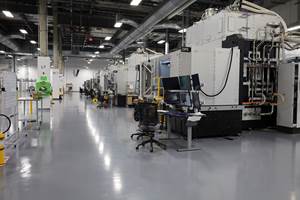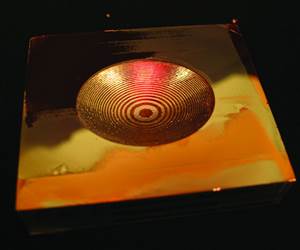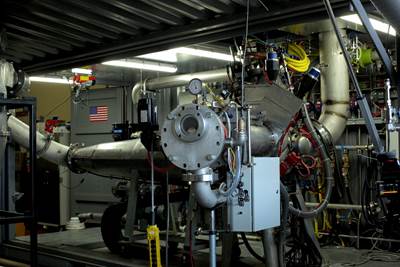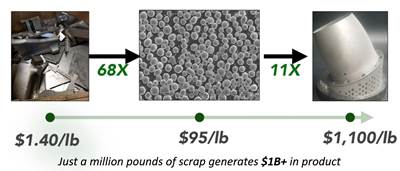Sustainable Metal Powder Company Addresses Next Piece of Road Map: Renewable Energy
Continuum Powders, the material production arm of small-scale foundry technology company MolyWorks, has announced new partnerships aimed at further reducing the environmental impact of its metal powder production.
Share
“I look at it as a roadmap,” says Greg Bartley, chief commercial officer of Continuum Powders. “We are already producing powder from recycled content, using low energy density and doing so efficiently. As a sustainable materials company we asked, what could be next?”
“We want to take all the steps within our control to make sure we’re being as sustainable as we can be,” says Greg Bartley, CCO of Continuum Powders. Source: Continuum Powders
The answer Bartley and the company came to was to reevaluate the energy powering its metal atomization process, to seek out more renewable energy sources. To that end, Continuum Powders just recently announced a new partnership with Priority Power, a broker that is helping the company secure renewable energy to power its compact material foundries, and Airgas, which supplies those foundries with argon that is produced with 99.8% renewable energy.
By seeking out renewable power and argon produced with renewable energy, Continuum Powders aims to reduce its total energy consumption and carbon footprint. The company says that the move also allows for decarbonization benefits to be passed onto customers.
AM Powders from Secondary-Use Materials
Continuum Powders is part of the latest evolution of MolyWorks, the California-based startup that developed a portable atomizer which can be operated within an enclosure the size of a shipping container. These “Greyhound” powder foundries are designed to recycle secondary-use materials (which could be anything from spent powder to support structures to failed builds to conventional ingot) into metal powders suitable for additive manufacturing in just one step. Feedstock material is melted with a plasma torch and passed through a stream of argon gas to become spherical powders ready for 3D printing.
The Greyhound M2P Reactor is designed to convert metal scrap into metal powders suitable for additive manufacturing, operating within the footprint of a shipping container. Source: Continuum Powders
MolyWorks launched the latest generation of this foundry in 2023, known as the Greyhound 3.0. This updated system has been optimized for commercial operations, with upgrades that enable continuous feed without stopping the atomizer to support running larger heats. Control system updates have improved the ability to manipulate the melt pool, and the time and energy needed for pumping down have been reduced as well, Bartley says.
While MolyWorks continues to be engaged in designing and manufacturing Greyhound units, the Continuum Powders business was established in 2022 to focus on producing commercial quantities of powder using these foundries. Today Continuum Powders operates two Greyhounds in Cloverdale, California; one in Singapore; and is fielding a small fleet in a new facility in Houston, Texas.
With the updates to the Greyhound system plus the aforementioned renewable energy agreements, Bartley says each foundry will generate less than 3% of the carbon per kilogram as powder produced by traditional powder manufacturing methods, while providing equivalent atomized materials.
A photo of Continuum Powders’ material under a scanning electron microscope (SEM). According to the company, its powders atomized from recycled materials are equivalent to other atomized powders in additive manufacturing. Source: Continuum Powders
Small-Scale Atomization, Big Impact
Most of the company’s powder production right now focuses on Inconel 718 due to market demand, Bartley says. But as the capacity grows, Continuum Powders will diversify into other materials, likely dedicating specific foundries to specific alloys. Metal is tested and blended if needed before atomization, and the process itself is able to extract and reduce certain elements including oxygen and nitrogen to control the chemistry, making the material production process highly efficient.
While today some of the feedstock is sourced from the marketplace, Continuum Powders aims to get to the point where it is primarily atomizing end-of-life or secondary-use material sourced from customers, who would then receive the newly atomized powder in a fully circular system. This type of direct recycling could even happen on location at a customer’s site for extreme efficiency, the avoidance of shipping, and perhaps even reasons of IP control for companies that might be using proprietary alloys. Distributing recycling in this way is one of the future steps in the company’s road map.
“We want to take all the steps within our control to make sure we’re being as sustainable as we can be,” Bartley says.
Related Content
Postprocessing Steps and Costs for Metal 3D Printing
When your metal part is done 3D printing, you just pull it out of the machine and start using it, right? Not exactly.
Read More3D Printing Molds With Metal Paste: The Mantle Process Explained (Video)
Metal paste is the starting point for a process using 3D printing, CNC shaping and sintering to deliver precise H13 or P20 steel tooling for plastics injection molding. Peter Zelinski talks through the steps of the process in this video filmed with Mantle equipment.
Read MoreVulcanForms Is Forging a New Model for Large-Scale Production (and It's More Than 3D Printing)
The MIT spinout leverages proprietary high-power laser powder bed fusion alongside machining in the context of digitized, cost-effective and “maniacally focused” production.
Read MoreAM 101: What is Ultrasonic Additive Manufacturing?
Going from additive to subtractive can be simple with Ultrasonic Additive Manufacturing (UAM). What is it and how does it work? Learn the basics in this 101 post.
Read MoreRead Next
Metal Powder Production From Scrap Going Global
California-based MolyWorks is shipping its second small-footprint powder production unit to Singapore, bringing sustainable material production to Asia.
Read MoreIs Recycled Metal Scrap the Future Feedstock of Choice for Metal 3D Printing?
MolyWorks is future-proofing the circular economy for metals with small-footprint atomization technology that converts metal scrap into additive manufacturing powder on the spot. But that's not the end of the story.
Read MoreAt General Atomics, Do Unmanned Aerial Systems Reveal the Future of Aircraft Manufacturing?
The maker of the Predator and SkyGuardian remote aircraft can implement additive manufacturing more rapidly and widely than the makers of other types of planes. The role of 3D printing in current and future UAS components hints at how far AM can go to save cost and time in aircraft production and design.
Read More
.jpg;width=70;height=70;mode=crop)


